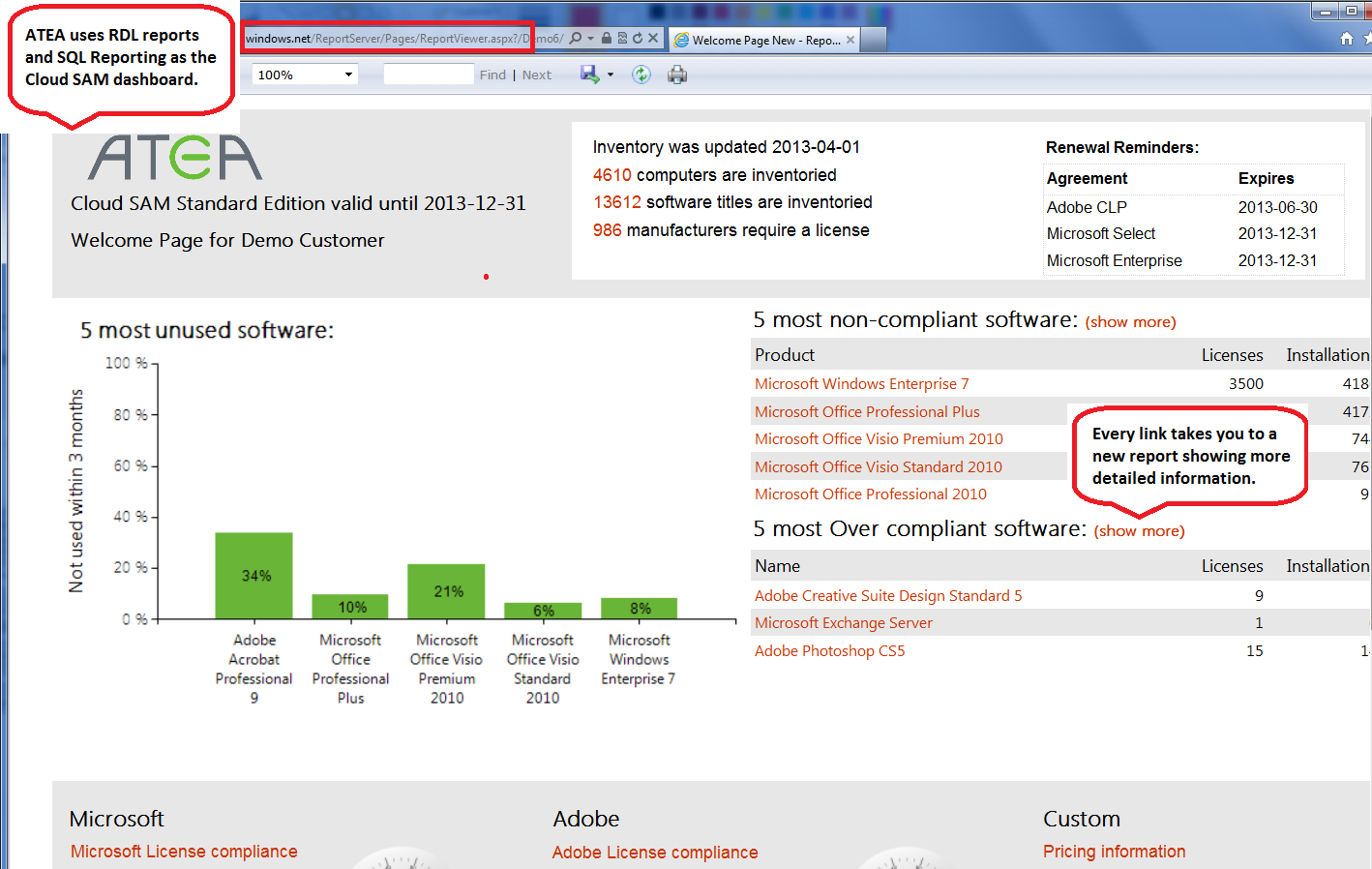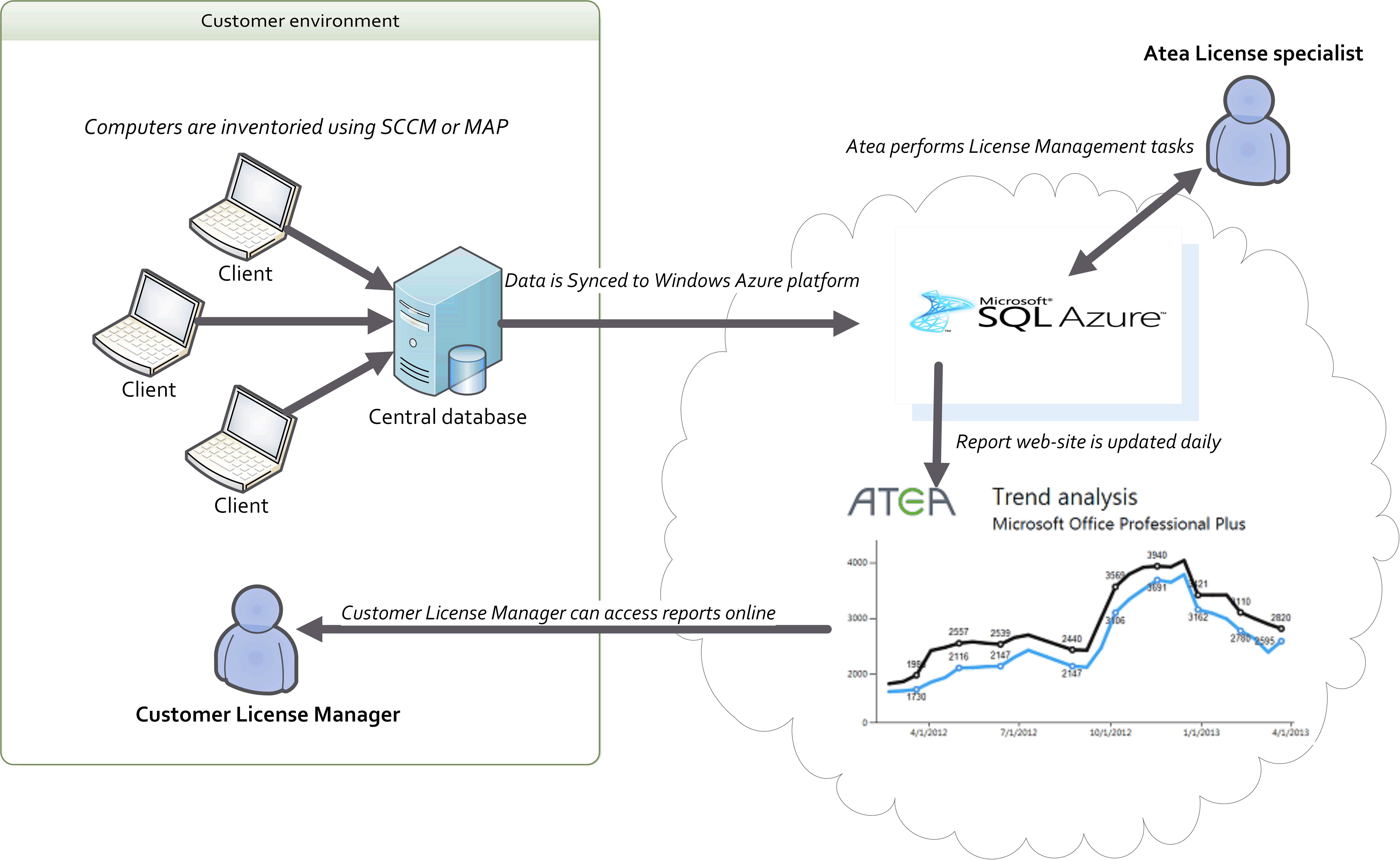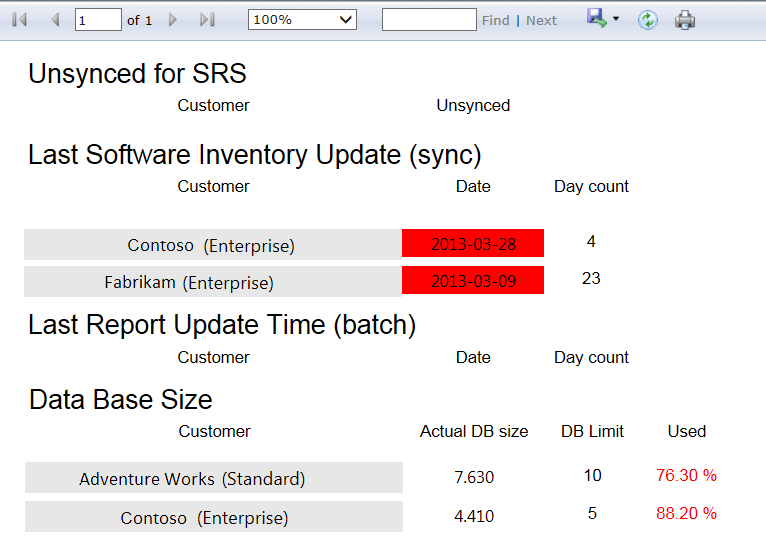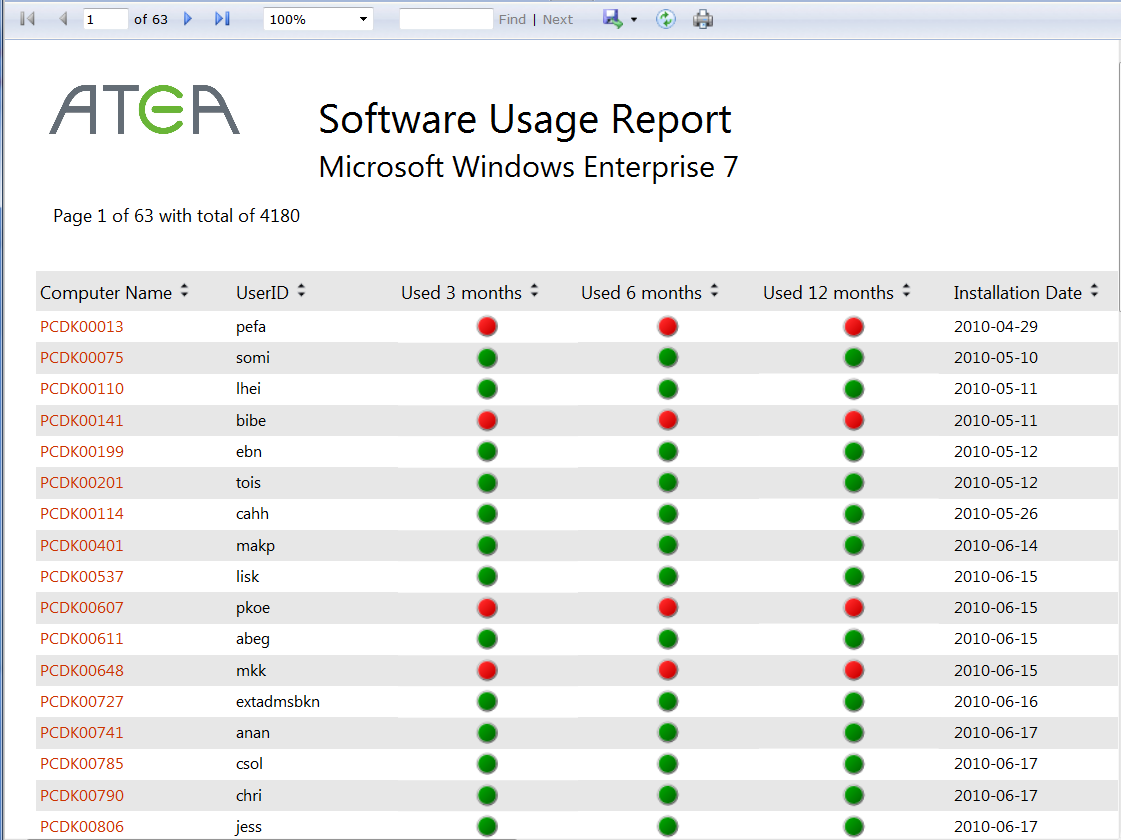SQL Reporting – build a business using reports in the cloud
See how one company uses RDL reports, Windows Azure SQL Reporting, SQL Database, and SQL Data Sync to generate new revenue streams from existing tools and expertise.
Cloud SAM is a software asset management service created by the Atea group. The service uses RDL and SQL Reporting to provide informative and actionable reports to subscribing customers. The dashboard for this service is shown below. It is actually an RDL report composed of charts, tables, text boxes with calculated data, gauges, and links to drill through reports. The entire web front-end is implemented solely as RDL reports running on Windows Azure SQL Reporting.
Cloud SAM is a success story that demonstrates how you can leverage RDL and Windows Azure to expand your business operations. In the case of Atea, the leading Nordic and Baltic supplier of IT infrastructure, customers were already asking for a service solution for managing software assets. After comparing costs and functionality of various platforms, Atea designed a solution that became Cloud SAM. The solution uses RDL and SQL Reporting, SQL Database, and SQL Data Sync.
Solution Architecture
Cloud SAM solution architecture employs several technologies from Microsoft. Using existing technologies is an important aspect of keeping costs down. Between the Windows Azure platform and local data collection components that can be run free of charge, Atea was able to concentrate on what the solution does, rather than spending resources on functionality that is already available.
The following illustration shows the component parts of the Cloud SAM solution, ranging from data collection on site, transformation and data manipulation in the cloud, to the presentation of specific, actionable information that meets the business need of the subscriber (in this case, maximum value of existing investment in software licenses).
On the customer site, any device running either the Microsoft Assessment and Planning (MAP) Toolkit or System Center Configuration Manager (SCCM) is polled for software installation and usage information. That data is collected into a central database on premises.
In the cloud, Atea uses SQL Data Sync to retrieve data from each subscriber, storing the data in a customer database managed by Atea. The Atea team creates and manages the databases and Data Sync groups. The team also runs internal tools and processes that make the data suitable for reporting. Part of this work includes incorporating licensing information that is created and maintained in-house. Most of the transformations are made using stored procedures that run on SQL Database.
An internal administrative reporting layer, also RDL-driven, allows the team to see which subscribers need help resolving specific errors or synchronization problems. The following screenshot shows a typical service health reporting page.
Because Cloud SAM is built as a service, Atea can swiftly address issues as soon as they arise, rolling out hotfixes and enhancements to their entire customer base in minutes rather than hours, without destabilizing the customer environment.
Customer-facing reports are updated daily. Reports on Cloud SAM can be viewed on any browser, on any device. A customer who subscribes to Cloud SAM can connect to SQL Reporting to view the summarized information in the dashboard, or drill down to other reports of interest. In this screenshot, the license compliance report uses a table, sparklines, and gauges to emphasize potential areas of concern.
Build a better business strategy in the cloud
Beyond the composition of the reports and the technologies employed in the Cloud SAM solution, what makes Atea’s story so compelling is the idea of creating an online service that leverages the expert knowledge that Atea already possesses through its licensing specialists and centralized data stores.
To learn more about Cloud SAM, watch this video.
[View:https://vimeo.com/39468848]
Through this customer success story, we hope that you are inspired to look at your own business in a new light. Do you have industry knowledge that can be monetized into a subscription service in the cloud? Does your business solution include RDL reports that consume SQL Server relational data? If you answered yes to either question, then creating a new online subscription service, using RDL reports as a web front-end, might be a great next step towards maximizing the information assets and skills you already have.
Links
Cloud SAM on the Atea web site



